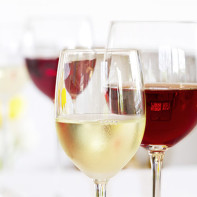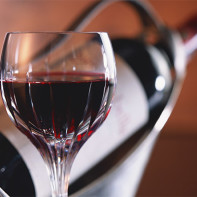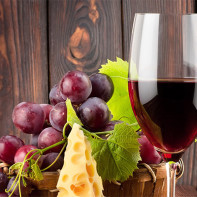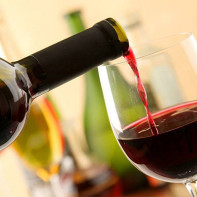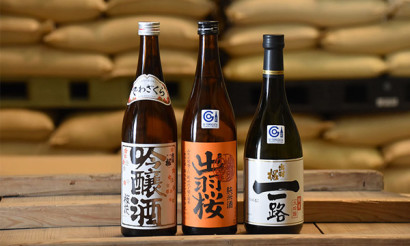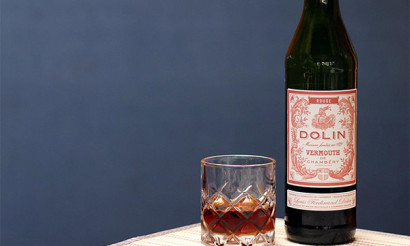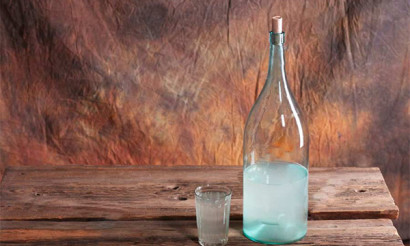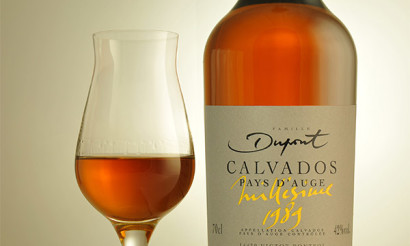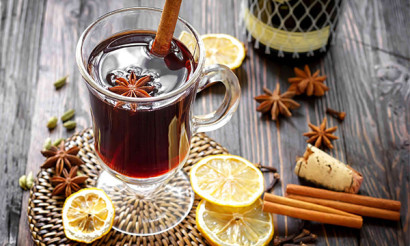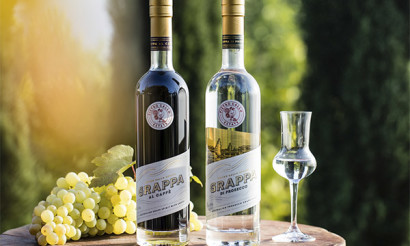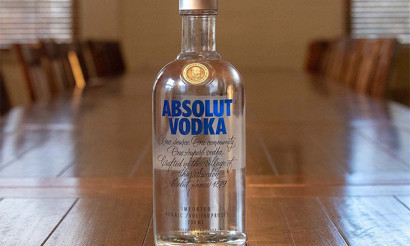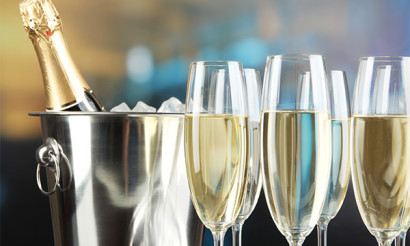How to drink wine
In ancient times, wine was considered a unique drink, which was endowed with magic and treachery. It was used as a magic elixir for various ritual rites, with the help of which they conjured. Currently, the attitude towards wine has changed a little, but it clearly has not lost popularity. So where did this interesting drink come from?
- Types of wine
- Composition and calorie content
- How to choose and store wine
- How to check the quality of wine at home
- Choosing the right wine glasses
- How to open and pour wine
- How to drink wine
- What to drink with
- Than have a bite
- Is it possible to drink wine
- After beer
- After champagne
- After tooth extraction
- After workout
- When taking antibiotics
- Under pressure
- With diabetes
- With gastritis
- With gout
- With pancreatitis
- During pregnancy
- When breastfeeding
- When losing weight
- In post
- How much can I drink per day
- Can I drink at night
- Wine cocktails: recipes
- Chocolate Kiss
- Spanish cocktail "Kalimocho"
- Strawberry Drive
- Apple Pink Julep
- Cherry Island
- "Astrologer"
- The benefits and harms of wine
- Benefit
- Harm
- Interesting wine facts
Scientists from different countries are still arguing about the version of the origin of the word itself and about the homeland of wine as such. According to some sources, the word "wine" comes from the Georgian "ghvivill", which means to bloom or wander. Other data speak of the Slavic common root "vit." The Sanskrit root “vena” is also considered similar in sound.
As for the legends about the origin of the drink, there are a great many of them. All this is because each nation considers its ancestors as the inventors of wine. For example, in Greece it is believed that the shepherd Estafilos was the ancestor of the wine, or rather, those who planted the first vine. It was he who discovered a wonderful plant in the forest, planted, cultivated and made juice that someone forgot to remove, and he wandered, giving the world a magical “potion”.
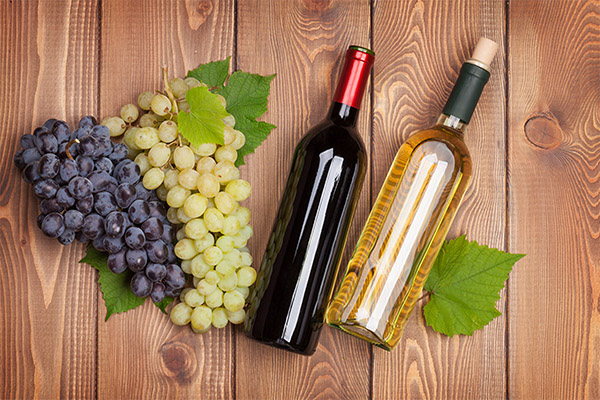
Ancient Rome believes that the first who planted grapes was not at all a man, but the god Saturn. It is his people who should thank for the opportunity to enjoy wine drinks.
In the East, it is believed that wine was accidentally discovered by one of the concubines of a certain king. The girl fell ill and decided that her days were numbered. She found spoiled juice in the basement of the palace, which, by order of the king, was removed and forgotten, and drank “poison”. As a result, she was starved by a dream, and after she woke up full of strength and health. Since then, wine has gained its wide distribution.
Types of wine
In any wine store today there is a huge selection of wines, which, according to winemakers, are divided into 4 types:
- Table wines that contain no more than 14% alcohol. This type includes Bordeaux and Rhine varieties.
- Sparkling. The name speaks for itself. Such wine is characterized by the same indicator as table wine, i.e. no more than 14% alcohol.
- Fortified wines. Their strength is already higher and ranges from 16 to 21% alcohol. Typically, these are varieties of port and sherry.
- Flavored. Their strength is 15.5–20% alcohol. These include vermouth.
Composition and calorie content
Wine is a product, so it also has its own unique composition and calorie content. It consists not only of water and ethyl alcohol, but also contains a huge amount of useful trace elements, such as vitamins, flavonoids, trace elements, acids. If we analyze each group separately, the list is as follows:
- Apple acid.
- Lactic acid.
- Acetic acid.
- Lemon acid.
- Vitamin A.
- Vitamin C.
- Vitamin B1.
- Vitamin B6.
- Vitamin B12.
- Vitamin B2.
- Vitamin B5.
- Vitamin PP
- Flavonols.
- Anthocyanins (natural dye).
- Tannins - substances for the "conservation" of wine.
- Catechins.
- Copper.
- Iron.
- Calcium.
- Phosphorus.
- Magnesium.
- Sodium.
- Manganese.
- Zinc.
In addition, it should be noted that the number of useful compounds in red wines is much higher than in white varieties.
The calorie content and amount of carbohydrates per 100 g in different varieties is completely different:
- Dry red contains 0.3 g of carbohydrates and 64 kcal.
- Dry white - 0.6 g of carbohydrates, 66 kcal.
- Semi-dry red - 1.8 g of carbohydrates, 75 kcal.
- Semi-dry white - 2.5 g of carbohydrates and 78 kcal.
- Semi-sweet red - 4 g of carbohydrates, 81 kcal.
- Semi-sweet white - 6 g of carbohydrates, 87 kcal.
- Pink - 6.5 g of carbohydrates, 73 kcal.
- Red dessert - 20 g of carbohydrates, 167 kcal.
- Champagne brut - 1.5 g of carbohydrates, 55 kcal.
- Dry champagne - 1.8 g of carbohydrates, 75 kcal.
- Semi-sweet champagne - 2 g of carbohydrates, 88 kcal.
- Port - 13.7 g of carbohydrates, 167 kcal.
- Vermouth - 14 g of carbohydrates, 140 kcal.
- Sherry - 13 g of carbohydrates, 147 kcal.
- Marsala - 20 g of carbohydrates, 172 kcal.
- Madera - 10 g of carbohydrates, 139 kcal.
These are the main indicators of the varieties of the drink. It should be noted that fats are not present in wine, and the amount of protein does not exceed 0.5 g. In addition, the higher the degree, the higher the calorie content.
How to choose and store wine
As a rule, people buy wine for special occasions, parties or just to make dinner a little nicer. In this regard, the choice of alcoholic beverages should be approached fairly responsibly, because if and not the whole evening, then most of it depends on which bottle gets on the table.

Experienced sommeliers when choosing wine in the store are advised to pay attention to the label. Each bottle of a quality drink should have two labels - the main and the additional. In a professional language, they are called frontal and reverse, respectively. The label should contain information containing the following items:
- manufacturer;
- region of production;
- crop year;
- variety of grapes or other raw materials;
- storage in a barrel;
- percentage of alcohol.
It should also be noted that the use of small print on the label, its absence as such, incomplete information or generalizing phrases (for example, that the best varieties of Georgian grapes were used in the manufacture of wine) indicate that the product is most likely of poor quality. Such a wine can not only spoil the impression, but also harm health.
Other nuances:
- Marking. For a quality product, it is always long, and the first letter should be as close as possible to the beginning of the alphabet.
- Packaging. It is advisable to choose a drink in a regular glass bottle without any frills, because In order to “lure” a customer, manufacturers often make the packaging too stand out, while the wine is not of the highest quality.
- Taste. Not deciding on the taste and preferences, it is better to give preference to red, because it's usually harder to ruin. And also you should pay attention to the dry or sweet, because their quality is almost always excellent.
- Bung. It’s not necessary to look for a bottle with a natural wooden cork. Modern technology has created corks that perfectly retain the taste and aroma of wine.
- Cost. There is one rule: good wine cannot be cheap!
If buying a bottle of wine, a person is not going to consume it right away, then one should know the features of storing the "potion". After all, the safety of all the taste qualities of the product depends on them:
- The temperature regime for dry wines should be from 10 to 12 degrees Celsius, and for strong ones - from 14 to 16. It should be clarified that the wine does not tolerate sudden temperature jumps and high temperatures in general.
- Humidity should be 65–80%.
- Sunlight and artificial light should not fall on wine bottles. This is especially true for white wines, as their susceptibility to light is much higher than that of red varieties.
- Long-term storage involves the horizontal position of the vessel, and for a short time you can put the wine in an upright position in a suitable bar or cabinet.
- Separately, it should be said about plastic bottles, storage in which is not allowed, because spoils the taste of wine. Of course, you can buy draft wine from home winemakers in such a package, but when you get home, it is better to pour the drink into a glass bottle.
- An open bottle with a drink should be stored in the refrigerator for 3-5 days. Too long periods are not allowed, as the oxygen that has got inside has a negative effect on the taste of the wine.
How to check the quality of wine at home
Having bought wine in the store, you do not need to run to a professional sommelier to find out about the quality of the drink. Experts say that there is a fairly simple algorithm of actions that helps an ordinary person determine the quality of a wine product at home:
- Before the wine is bottled, the bottle must be shaken well and then poured a little into a glass. If the product is of high quality, then the foam will be in the middle and quickly disappear. The wine from cheap raw materials foam is formed on the sides and holds for some time.
- After the wine is poured into the glass, you should rotate it, while slightly tilting the container. Traces will remain on the walls, and the longer they remain, the higher the quality of the drink.
- An excellent assistant in establishing a quality product can be ordinary soda. On it should pour one spoonful of wine and monitor what is happening. Real wine will react to form a foam. Red "potion" will acquire a characteristic gray or bluish tint.
- You should also examine the bottle and cork. The latter should not have a musty smell and dried appearance. In the tank, you need to analyze the sediment. In wine, it may well be present, but not loose and in small quantities.
- The taste of the right wine should be viscous and leave a long aftertaste.
So, if the wine is purchased correctly and meets all the main indicators and selection rules, then it will delight the hosts and guests!
Choosing the right wine glasses
To choose a wine on the occasion of a celebration, for example, it is important, but no less important is the dishes for the drink, or rather the glasses, which must correspond to certain types of alcoholic beverages. As a rule, containers for drinking wine are distinguished by long legs in order to avoid contact of the liquid with the heat of the human hand, as when heated, both the taste and color of the drink change their data far from for the better.
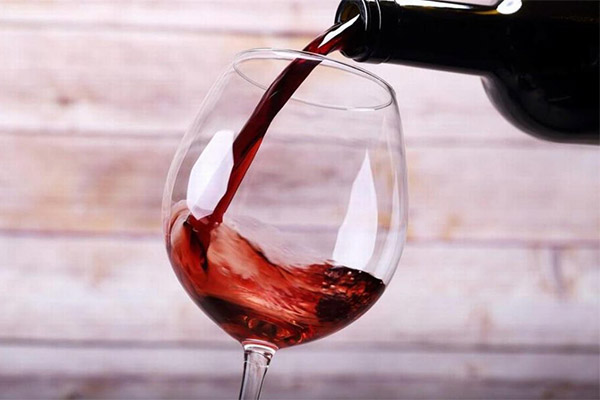
The shape of the glass is created on the basis of the taste buds of the tongue, which are located unevenly. In order for the flavor bouquet to reveal truly, they created different wine glasses. They differ in height, width and, in fact, shape.
The most popular wine glasses are representatives of the Burgundy and Bordeaux types.
Burgundy glasses have a spherical shape, tapering in the upper part. Their volume can be about 0.9 liters. They are designed for refined wines with a light aroma and texture. It is this form that helps to reveal the elusive smell of the product and better convey the exquisite taste.
The Bordeaux form is glasses of elongated shape. The walls of the vessels are flat, and the bottom is wide. Such glasses are suitable for table wines of all sorts, as well as for those whose taste and aroma are very saturated. The volume of containers varies from 0.45 liters to 0.6 liters.
These two forms of wine glasses are perfect for red wines.
For white wine should choose smaller options Bordeaux form, up to 350 ml. Due to the fact that the white varieties of the drink are served chilled, in glasses of this type it does not have time to heat up, thereby maintaining the ideal drinking temperature.
It is rare to choose a Rhine wineglass to serve white wines. The wine glass itself was created for the Rhine wines. It has an elongated shape and a volume of not more than 120 ml. Such glasses are usually made of colored glass.
For sparkling wines, experts recommend using glasses of flutes. These are narrow vessels with a small notch at the bottom. This form is designed to maximize the low temperature of the drink.
At large receptions and large-scale gala dinners or dinners, a champagne saucer is often used - a special type of wine glass with a wide bottom and low walls. They are mainly used to create grandiose compositions such as a pyramid.
A glass of sauternes with a narrow bottom and a spherical top is suitable for a dessert type of white wine.
Rose wine is poured into any glasses. You can use burgundy, and burgundy, and wine glasses for white varieties of the drink.
Sweet alcoholic beverages, distinguished by a noble “sound”, are usually poured into a Madeira glass, the volume of which is 0.08 L, has a wide bottom and small even walls.
For sherry and port it is customary to use small wine glasses on a low leg with a narrow bottom and walls expanding to the top. The volume of such a vessel is 0.1 liters.
Also, when choosing wine glasses, it is worth paying attention to their material. It is best if they are products made of crystal, and not of colored glass, which will hide the entire color scheme of the drink. And before you buy glasses, you should proceed from your alcoholic preferences.
How to open and pour wine
Having bought a bottle of wine and having decided on a glass, you can proceed to the process of opening and "pouring" a drink. It also has its own rules and features:
- The bottle should be placed on the table at waist level and wipe the neck with a cloth.
- The second point is the use of a corkscrew. This unit must first be screwed into the cork one turn, then slightly loosen it, after which the corkscrew must enter another four turns. Care must be taken not to pierce the plug through, as it will spoil the taste and appearance of the wine. Next, the cork should be pulled out about three quarters, remove the corkscrew and only then open the bottle by pulling the cork with your hands. After that, wipe the neck with a napkin.
- When pouring wine, you need to ensure that the drink does not touch the foil on the neck of the bottle. The wine glass and the vessel with wine should not touch, but be as close as possible to each other.
- The person who pours the wine should stand to the right of the guest. If this is not possible, then you should take a glass and pour the wine, keeping it on weight.
- White wine should be poured into two-thirds of the glass. It is customary to fill half a glass with red.
- First, wine should be poured to the representatives of the beautiful half of humanity.
How to drink wine
Nowadays, the culture of drinking alcohol is almost forgotten, but in vain. You need to be able to enjoy the taste of an exquisite drink, and also not to spoil the long-awaited evening.
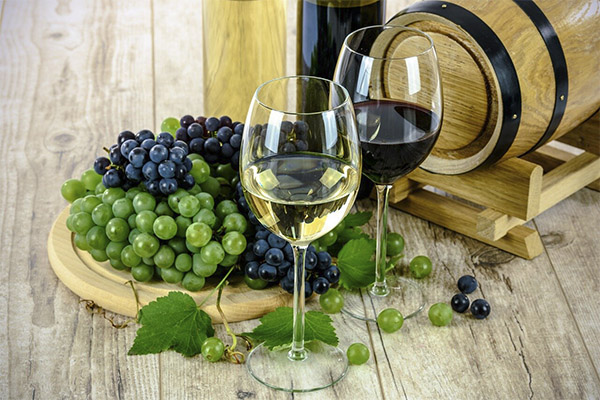
To experience the true pleasure of the drink, you should use it at a special temperature regime:
- 13-15 degrees for red young wine.
- 15-17 degrees for mature red varieties.
- 7-10 degrees for sparkling, white dry and pink drinks.
- 9-12 degrees for top quality white varieties and sugary drinks.
When the wine was in the glass, you should evaluate its appearance. To do this, raise the glass to eye level and determine the shine, the absence of bubbles (if it is not champagne) and sediment. Then take a deep breath and feel the aroma. Good wine does not smell sulfur and yeast. After turning the glass and again hear the smell of the drink. Only after that you can taste it by moistening the upper lip first, and then sip the wine so that it gets on the upper tongue. If there is a clear selection of one of the components in the taste, then such a wine is most likely not of very high quality.
In addition, you cannot pour different types of drink into one glass, because their taste characteristics are lost, leaving a false impression.
What to drink with
The rules for the use of wines relate not only to their supply, storage and consumption, but also to which dishes a particular variety is served. In general, in different countries of the world, those products that are customary to use depending on the culinary traditions of the area are served to wine. But there is an unshakable rule for everyone: the more noble and expensive the wine, the easier the snack should be. Also, food should not interrupt the taste of the drink.
The main menu depends on the variety, strength and sweetness of the drink.For example, meat dishes are appropriate for red wine, and seafood or cold snacks for white wine. For dessert, guests can be pampered with fortified drinks.
Cheese, fruit and bread are suitable for any kind of wine.
Than have a bite
Having decided on the type of wine, choosing the right glasses, you should pay attention to the menu. For each type of wine there is a list of dishes that will most fully reflect the taste of the drink, without interrupting it and helping to open up completely.
Semi-sweet red wine is best, according to experts, combined with the following snacks:
- seafood;
- vegetable salads;
- chocolate;
- mild types of cheese;
- ice cream;
- fruits (pears, bananas, strawberries);
- dietary meat (e.g. rabbit meat);
- poultry meat.
For dry red wine, it would be appropriate to offer:
- meat;
- meat delicacies;
- chicken meat roll;
- nectarines;
- fruits, especially mangoes, plums, peaches;
- ripe, sweet cheese;
- Italian cuisine.
Semi-dry red:
- cheese like Dor blue;
- sea kale;
- fatty sea fish;
- meat;
- fruit and berry salads.
Sweet red is usually supplemented with the following dishes:
- tuna;
- salmon;
- ice cream;
- biscuit;
- kiwi;
- orange;
- meat.
Dessert red wines are consumed with such products:
- crisp bread;
- sweet pastries;
- candies.
For white semisweet, such dishes are suitable:
- fish in baked, stewed, fried versions;
- chicken;
- game;
- veal;
- pate;
- seafood;
- young cheese;
- julienne.
Dry white wine:
- seafood, including caviar;
- poultry meat;
- fruit;
- natural ice cream.
White semi-dry wine will reveal its taste if you serve such dishes to it:
- Rolls
- a bird;
- foie gras;
- sushi;
- creamy sweets;
- different types of sausages.
To white sweet you can offer:
- desserts;
- salty cookies;
- fresh varieties of cheese.
It is better to offer pink wine as an aperitif, combining it with such snacks:
- poultry meat;
- cheese (it is better to choose creamy grades);
- pastes;
- airy desserts with cream.
A sparkling wine:
- unsweetened cookies;
- red salted caviar;
- young cheese;
- ice cream;
- berry dessert.
So, a properly selected menu will complement the taste of the selected wine and help to reveal all the shades of the drink.
Wine, as you know, is a special drink that requires a careful and careful attitude. So that it benefits and does not adversely affect human health, you should remember the features of its consumption: with which drinks it can be mixed, and with which it is impossible, which diseases it can cure and which provoke.
Is it possible to drink wine
So, you should understand the issues when you can drink wine.
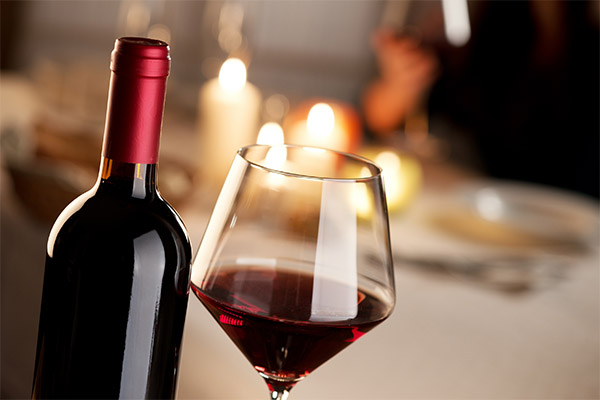
After beer
Fans of these two popular alcoholic drinks, according to experts, should choose one type of product, because their mixing is unacceptable due to different cooking technologies. Everyone knows that beer is made from grain, and wine is made from grape raw materials. If a person mixes these two products, then nausea, and in some cases vomiting, and severe headache with bouts of a terrible hangover syndrome will be provided!
After champagne
If a person is not afraid to lose the zest that is contained in the tastes of sparkling drinks, then after champagne you can consume those wines whose degree is higher. The well-known rule of drinking any alcoholic beverages is that degrees can only be raised. Lowering is fraught with health problems.
After tooth extraction
Going to the dentist is a real stress for some, and many people take tooth extraction as a catastrophe, experiencing real horror at the doctor. Naturally, lovers of "relieve stress" are interested in when they can recover with the help of a "dose" of alcohol. Dentists are unequivocal in their answer: drinking alcohol-containing drinks is allowed after a few days or weeks. The term depends on the complexity of the operation and the individual characteristics of the body.
After workout
As you know, people involved in sports should lead a healthy lifestyle, giving up bad habits.Of course, you can sometimes allow a glass of good wine in the company of loved ones, but after training it is better to abandon this venture. The fact is that after attending sports classes in the body, the process of assimilation of nutrients intensifies, and wine leads to some kind of regression, disrupting the process of building muscle mass and bearing an additional burden on human organs. It is better to skip a glass of wine in those days when there is no training. Then it will be pleasant, and harm will not work!
When taking antibiotics
There is a strong belief that taking strong drinks and antibiotics at the same time are not compatible. However, this is not quite true. It has now been established that alcohol does not affect the administration of antibacterial drugs, with the exception of some of them. Medicines whose compatibility with wine is strictly contraindicated include the following:
- Metronidazole.
- Ornidazole
- Tinidazole
- Cefotetan.
- Erythromycin.
- Cimetidine.
- Voriconazole
- Intraconazole
- Ketekonazole.
- Cycloserine.
- Ethionamide.
- Thalidomide.
The use of these drugs and alcohol is prohibited, as negative consequences can lead to disruption of the liver, central nervous system, intoxication and dehydration are also possible.
Of course, do not rejoice and run to the store for a bottle of wine. There are doses that cannot be exceeded - this is approximately 200 g of wine, with a strength of not more than 13 degrees, but not more.
Under pressure
Wine in an acceptable amount is quite useful for the body. Its positive effect also affects the health of people suffering from malfunctioning blood pressure. Depending on the variety, it can increase or decrease blood pressure. It depends on the sweetness of the variety and the amount of fruit acids. So, semi-sweet red and semi-dry can be used by people with low blood pressure. For those with high blood pressure, you can sip a dry or sour variety of red drink. White wine does not lower the pressure. In addition, high blood pressure is a strict contraindication to the use of berry wines (strawberry, cherry, raspberry).
The daily norm for men is 2 glasses, and women are allowed to drink no more than one. In addition, the fortress should not exceed 10 degrees.
It is strictly forbidden to drink wine for those who are diagnosed with arterial hypertension of the second and third degree, pressure above 160. Therefore, before you enjoy a glass of wine, you should measure the pressure and still consult your doctor.
With diabetes
Diabetes patients must seriously control everything that gets to them on the table. The same rule applies to wine. In general, drinking alcohol is undesirable because this can trigger hypoglycemia. But if the desire is irresistible, then you should adhere to certain rules:
- Red dry wine is allowed.
- Safe dose - up to 200 ml.
- The frequency of use should not exceed three days a week.
- It is forbidden to drink on an empty stomach and after long breaks in food, after physical exertion.
- Before use, measure glucose levels.
- Need a consultation with your doctor.
- It is forbidden to use dessert, fortified wines and sherry.
In any case, before drinking an alcoholic beverage, even of the highest quality, it is necessary to consult a specialist to determine all possible risks and establish a beneficial effect.
With gastritis
Gastritis is an occasion to follow a diet and abandon many previously beloved dishes. As for alcohol, patients with low acidity with this diagnosis can consume 150 ml of wine, but once a month. Red wine should be preferred; white and sparkling wine are prohibited.With increased acidity, alcohol is contraindicated.
With gout
For a long time, alcohol was forbidden for gout. Recent studies have also shown the negative impact of alcoholic beverages, and especially wine, on exacerbation of the disease. In extreme cases, no more than 100 ml of dry white wine is allowed, and red patients should be forgotten at all. You can also drink a glass of a drink after a gouty attack no earlier than a month after the indicated event. Thus, it is better to completely abandon wine with this diagnosis!
With pancreatitis
Pancreatic dysfunction associated with the replacement of organ tissue with fibrous is called pancreatitis. People suffering from this disease should adhere to a special menu so as not to cause an exacerbation of the disease. Many products, including alcohol, are banned. Even a single dose of wine in small doses and a small fortress can negatively affect the health of such a patient. Therefore, the reception of any wine drinks is strictly prohibited!
During pregnancy
Pregnant ladies are special women with strange addictions. Some of them are just drawn to drink wine. What to do? Doctors unanimously urge expectant mothers to stop drinking wine in order to prevent complications during pregnancy and a negative impact on fetal development. But still there are slight indulgences - twice a week it is allowed to drink no more than 150 ml of table dry or semi-sweet wine. Dessert varieties should be discarded. But the benefit may be precisely from red wine, which was previously recommended even once a day for a tablespoon to increase hemoglobin, improve blood formation, remove toxins and reduce the risk of thrombosis. But nowadays there are safer ways to prevent and eliminate these problems.
In the early stages of pregnancy, you should completely forget about all strong drinks. Relaxation will be possible from the middle of the second trimester. The fact is that at the very beginning, wine can provoke violations of the baby’s nervous system, external defects, and heart dysfunctions. Namely, for these reasons, in order to preserve and give birth to a healthy child, one should refuse to drink wine, because human life is worth it!
When breastfeeding
In the body of a small person, there are no enzymes that can break down ethanol. The long term of its elimination from the infant body increases the load on the brain and the fragile nervous system. For these reasons, women during lactation should refrain from drinking wine, this is especially important during the first three months after birth. Do not forget that drinking wine can lead to a baby’s allergies, digestive upsets, poisoning, sleep disturbances, a malfunction in the nervous system, destruction of brain cells, and lowering blood pressure. In rare cases, for example, at a very solemn event, it is possible to receive one glass of dry white wine.
When losing weight
Most nutritionists find it possible to drink one glass of dry wine at dinner. The only thing you need to pay attention to is the calorie content of the product. Experts advise giving preference to a red drink, as it has no sugar and contains resveratrol, which starts the process of burning fat cells, speeds up metabolism and prevents the aging of the body as a whole. You can also drink dry white wine or brut champagne. But in any case, you can consume no more than a glass of wine per day, and not a bottle or two!
In post
The use of wine in fasting for people who are not addicted to alcohol is allowed according to church canons, but there are rules for its consumption:
- Abstinence from wine on the first day of fasting.
- On the second and third days only water is allowed to drink.
- Wine can be consumed on Saturday and Sunday, but only in moderate doses.
- It is forbidden to drink alcohol in the first and last days off of the fasting period, the days of commemoration of especially revered saints, on great holidays that fall on the period of abstinence.
- Sherry should be consumed, diluted with water in a ratio of 1: 3.
- On permitted days, the average person can consume up to 900 ml of wine.
- It is not forbidden to drink Cahors on the Annunciation, Palm Sunday, Clean Thursday.
How much can I drink per day
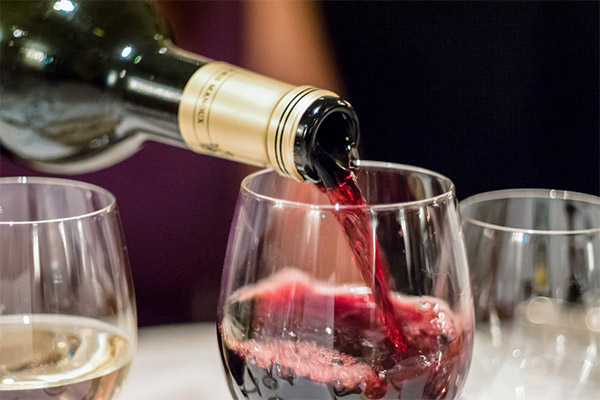
Wine, as well as any other alcoholic beverage, has its own acceptable consumption standards. Of course, each person will have his own daily dose of alcohol, because it is necessary to take into account the individual characteristics of the body, height, weight, state of the nervous system, etc. But doctors nevertheless deduced the permissible value of the drink consumed per day, which for women amounted to about 150 ml of dry wine, and for men - about 300 ml. Sparkling wines do not pose a serious danger, if we limit ourselves to two glasses per day. The norm of a red drink is 100 ml, and white - 200 ml.
But before you drink a glass of alcohol daily, you should weigh all the benefits and harms of such a pastime, as well as familiarize yourself with contraindications.
Can I drink at night
If a person experiences stress from an event, cannot relax and plunge into a healthy and sound sleep, then doctors advise drinking a glass of wine to relax, but no later than three hours before bedtime. It is better if it is a dry red wine that helps to dilate blood vessels, relax, normalize blood pressure and calm the heartbeat. However, people suffering from insomnia and disorders of the nervous system, this option is not recommended, because “Immunity” to this method of falling asleep is formed after 3-4 days. The body "will require" an increase in the dose of alcohol, which can lead to rapid addiction.
Wine cocktails: recipes
The wine itself has an exquisite taste, with revealing hints of sun-warmed grapes, strawberry flavor and pomegranate tartness. But it no less than perfectly complements cocktails, giving them their zest and magic. So, what kind of cocktails can you make yourself?
Chocolate Kiss
Ingredients:
- 40 g of grated chocolate.
- 50 ml of dry red wine.
- 100 ml cream.
- 100 ml of chocolate liquor.
Cream, wine and liquor are mixed in a shaker, then poured into glasses filled with ice and sprinkled with chocolate on top. The cocktail is ready!
Spanish cocktail "Kalimocho"
You will need:
- 100 ml of any red wine.
- 100 ml Coca-Cola.
- 1 slice of lemon.
Wine and cola are mixed in a shaker and poured into glasses with ice. Lemon is used to decorate the edge of a cocktail glass.
Strawberry Drive
To prepare this cocktail you will need:
- 100 g of crushed ice.
- 15 ml of strawberry liquor.
- 100 ml of soda.
- 100 ml of red wine.
Wine, liquor and soda are mixed in a glass, ice is added and served to guests.
Apple Pink Julep
The composition includes:
- Mint - 10 leaves.
- Pink port wine - 120 ml.
- Apple juice - 30 ml.
- Ice.
Cooking: crushed mint leaves with juice are mixed in a shaker, then wine and ice are added. After that, pour into glasses and decorate with a sprig of mint.
Cherry Island
Ingredients:
- Cherry jam - 1 tbsp.
- Lemon juice - 39 ml.
- Vodka - 39 ml
- Brut - 90 ml.
All ingredients are mixed using a shaker, after which the contents are poured into glasses.
"Astrologer"
Composition:
- Chardonnay - 60 ml.
- Hawaiian rum - 30 ml.
- Vanilla syrup - 15 ml.
- Pineapple juice - 15 ml.
- Lime slice.
- Crushed ice.
Cooking: all components are mixed in a shaker, poured into a glass and decorated with lime.
The benefits and harms of wine
Wine has long established itself as a magical "potion" that can not only amuse and overshadow the mind, but also bring benefits to the human body. Studies of this drink have proven a positive effect on the human body with moderate consumption.
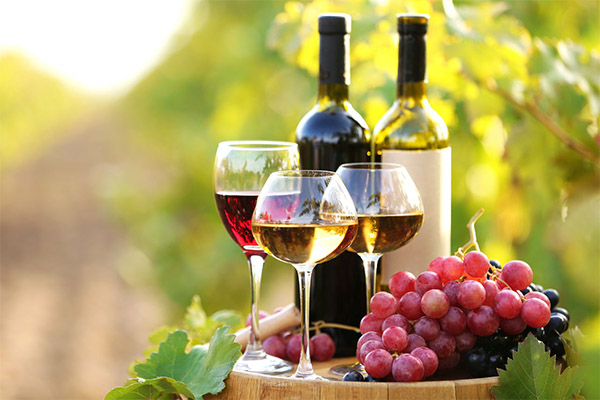
Benefit
Doctors and scientists have come up with a list of diseases and disorders of some functions of the human body, which wine acts with benefit. Namely:
- increased appetite;
- removal of puffiness;
- improvement of taste buds;
- stress relief and elimination of nervous disorders;
- stabilization in heart failure.
Sparkling wines do such miracles.
Red drinks are useful in the following:
- troubleshooting sleep problems;
- normalization of the gastrointestinal tract;
- increase immunity;
- lower cholesterol;
- vasodilation;
- normalization of the nervous system;
- purification from toxins;
- filling the lack of vitamins and amino acids.
White wines cope:
- with violations of the digestive tract;
- violations of pathogenic microflora;
- malfunctions of the cardiovascular system.
- aging processes.
Harm
But in addition to benefits, there are a number of negative consequences of drinking wine:
- weight gain;
- the development of liver disease;
- the occurrence of alcohol dependence;
- development of psychosis and depressive states;
- flatulence;
- development of tachycardia:
- weakening of the heart muscle;
- arrhythmia;
- the development of risks of impaired heart function.
Thus, the benefits of wine, of course, are, but this is subject to moderate consumption. The harm will be disproportionately large if you “zealously” too much and often.
Interesting wine facts
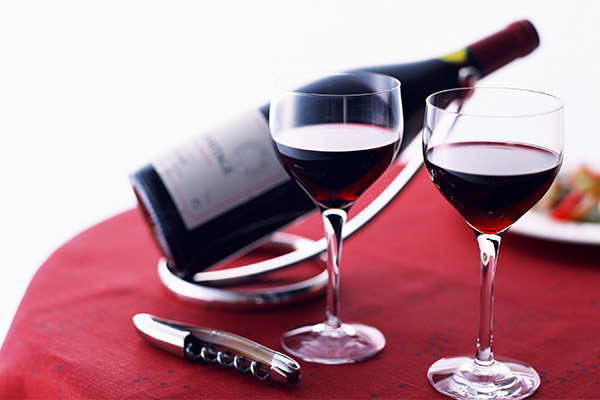
- The expression "Drink for health" appeared in ancient Greece, where, according to tradition, the owner sipped wine in front of the guests in order to show that it does not contain poison.
- The inhabitants of ancient Rome were strictly forbidden to drink wine. For drinking, the husband could kill his wife, and only in 194 BC. e. such harsh punishment gave way to divorce.
- The oldest wine bottle dates back to 325 g. e. It was discovered in Germany, near the city of Speyer.
- Champagne, according to the law of the European Union, is called only the drink that is produced in France in the province of Champagne.
To drink or not to drink - everyone decides for himself. But sometimes one wants to enjoy a glass of an ancient magical drink that can relax the body and calm the soul!
«Important: all information on the site is provided exclusively in fact-finding purposes. Before applying any recommendations, consult with a profile specialist. Neither the editors nor the authors are liable for any possible harm caused materials. "

